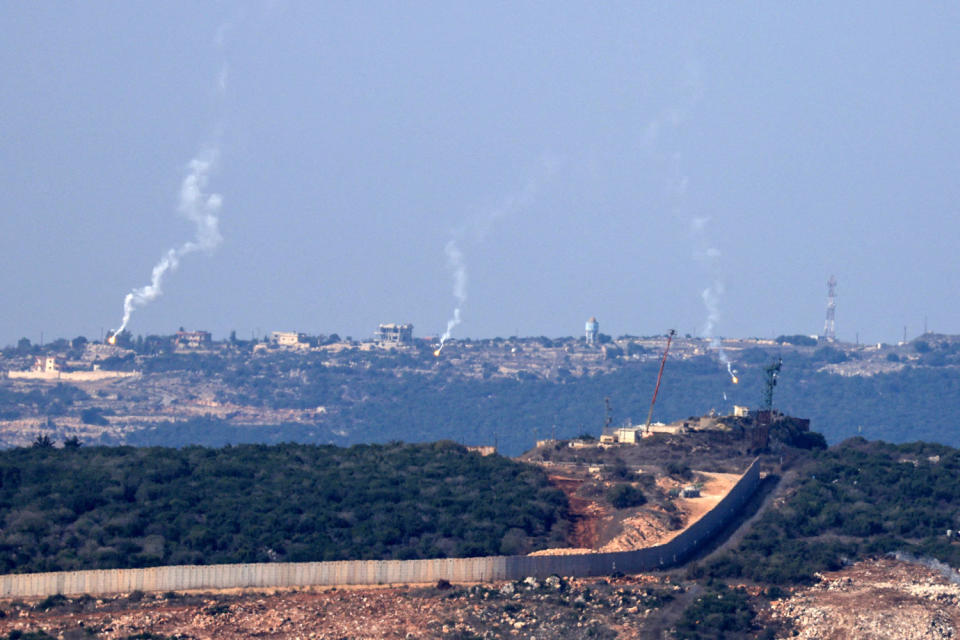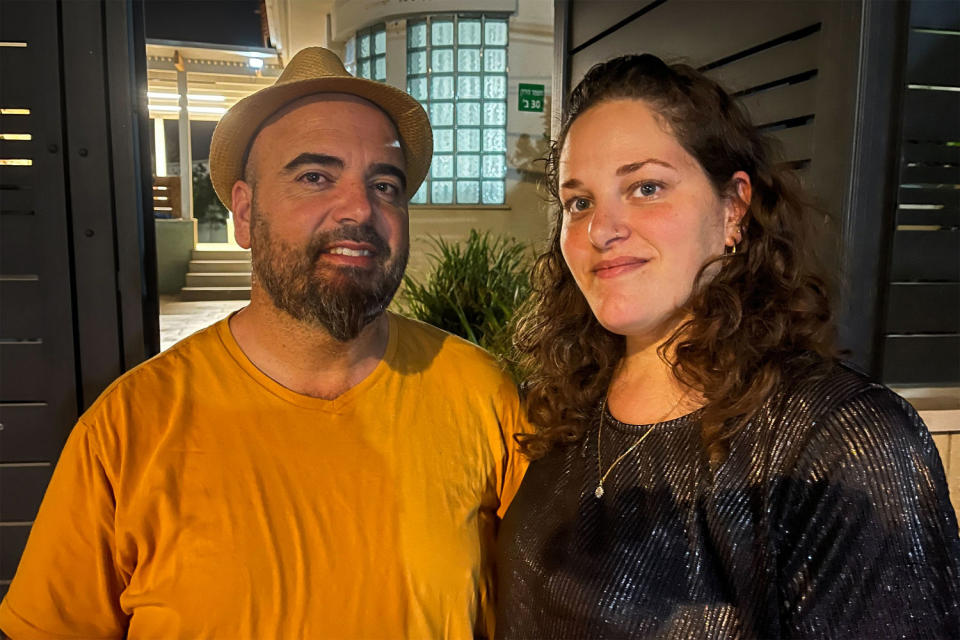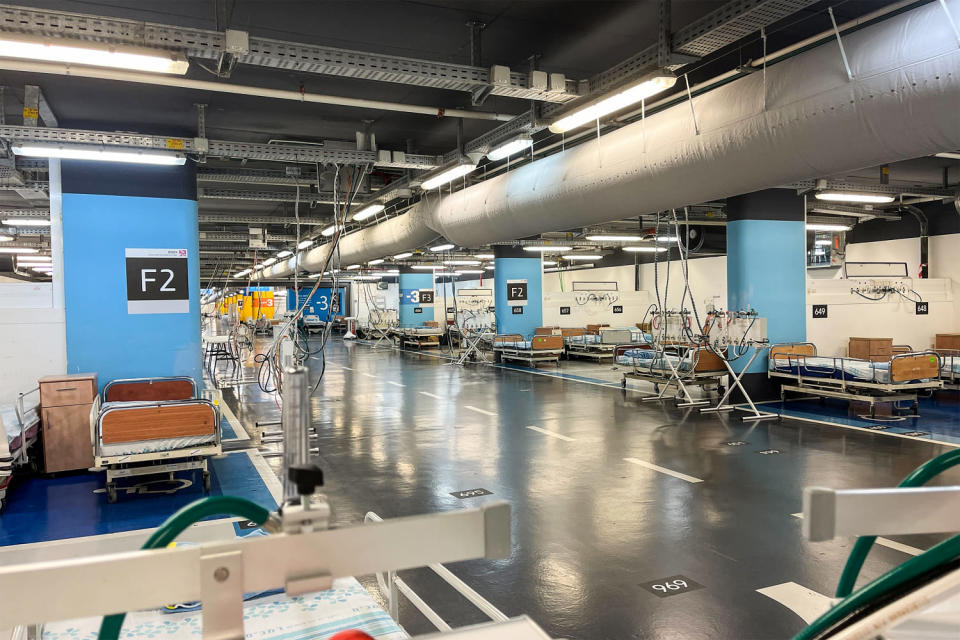HAIFA, Israel — While concern over the humanitarian crisis in the Gaza Strip mounts, another undercurrent of alarm is growing in Washington and other Western capitals: Israel’s bombardment could spread into a wider regional war — one involving regional superpower Iran or its proxy forces.
On Sunday, Iranian President Ebrahim Raisi said on X that Israel had “crossed the red lines, which may force everyone to take action.”
Many experts believe there is little desire in Washington and Tehran for a regional conflict. But the scope for miscalculation is huge, and the intensity of Israel’s bombardment of Gaza, which, according to Palestinian health officials, has killed more than 8,000 people, including thousands of civilians and children, could easily push the situation spiraling out of control.
“There’s a real risk of escalation,” said Sanam Vakil, the director of the Middle East and North Africa program at Chatham House, a London-based think tank.
Since Hamas launched its terrorist attacks, Tehran-backed Hezbollah militants have been regularly trading rocket fire with Israel across its northern border with Lebanon. More than 40 Hezbollah fighters and seven Israeli soldiers have been killed in the past three weeks, each side says.
Iran also warned last week that it could launch a missile at the port city of Haifa in northern Israel if the country’s military pursues a full-scale ground offensive into Gaza.
Further afield, a series of drone and rocket attacks on U.S. military bases in Iraq and Syria by Iran-linked militias have led the U.S. to respond by dispatching two carrier groups to the Mediterranean Sea. It also scrambled a pair of F-16 fighter jets Friday to bomb Syrian weapons and ammunition facilities.

“Washington asks us to not do anything, but they keep giving widespread support to Israel,” Raisi, the Iranian president said on social media. “The U.S. sent messages to the Axis of Resistance” — the name given to Iran’s proxies — “but received a clear response on the battlefield.”
Iran and Hezbollah most likely don’t want a wider war, Vakil said; instead, they are likely to be threatening conflict to forestall a full Israeli ground invasion.
But, she said, the militias sponsored by Iran operate with some degree of autonomy from Tehran, adding another layer of uncertainty to the mix. Iran, which also backs Hamas, said that it wasn’t behind the rampage on Oct. 7 but that it supported the attack.
Cross-border fears
On both the Israeli and the Lebanese sides of the border, there are fears of a repeat of the 2006 war that ended in the deaths of more than 1,500 Lebanese people (most of them civilians) and hundreds of Israeli soldiers and the destruction of huge swaths of Lebanon’s economic infrastructure.
With their three children, ages 10, 9 and 8, Efrat and Yhonatan Bitton evacuated their home in Shtula, a small farming community known as a moshav, similar to a kibbutz, less than a mile from the Israeli border, they said. Days later, a Hezbollah anti-tank missile landed in their street, killing a local builder, injuring three other people and smashing their neighbors’ windows.

“Before we left, there was a silence that made you feel that every moment something was going to happen,” said Yhonatan, 43, who works as a forest guide. His wife, 32, a business administrator, added: “We told our children a little bit about what’s happened, and they said: ‘Why do you tell us? Now we are afraid. We don’t want to hear about that, because now we can’t sleep at night.’”
On the Lebanese side, less than 3 miles away in the town of Rmaych, Hiba Andrawos, 43, is stuck in her home with her three daughters, ages 12, 11 and 9.
“I’m still scared. Even right now, I’m very, very scared,” said Andrawos, who briefly took her family to the capital, Beirut, but had to return home because of a lack of space and money. She is having tests following surgery and chemotherapy for breast cancer, and she said her children are so anxious that they barely speak.
“Every time I hear bombing, I start thinking I’m going to have to relive the July War,” Andrawos said, referring to the 2006 conflict. “I’m honestly very afraid.”
Attack capability
Hezbollah boasts an arsenal that dwarfs that of its fellow militants in Hamas, who are also backed by Iran. In 2010, then-U.S. Defense Secretary Robert Gates said Hezbollah had “far more rockets and missiles than most governments” — and that has only grown.
Eight years later, a report from the Washington-based Center for Strategic and International Studies think tank called the Shiite Muslim group “the world’s most-heavily armed non-state actor, with a large and diverse stockpile of unguided artillery rockets, as well as ballistic, anti-air, anti-tank, and anti-ship missiles.”
So far it has used only a fraction of that stockpile, all within a narrow area Israel and Lebanon have fought over for decades.
The U.S. and Israel, traditional enemies of Iran, are united by fears that Tehran could build a nuclear bomb. Israel already has nuclear weapons, proliferation experts agree, although it hasn’t and most likely never will confirm their existence.
Going underground
At Rambam Hospital in Haifa, just 20 miles from the Lebanese border, spokesperson David Ratner said people were “on the edge of our seats” about an attack.
If missiles do reach the hospital, as they did in the 2006 war, its 1,500 doctors and up to 2,000 patients would begin the painstaking, hourslong process of moving underground, relocating into the world’s largest fortified, subterranean hospital, built especially for this scenario.

It is a colossal feat of engineering: It cost 450 million shekels (around $110 million), and required the removal of 10 million cubic feet of earth — enough to fill 100 Olympic-size swimming pools. Because the hospital is right on the portside, during the 2½-year construction, almost 70 billion gallons of water had to be pumped back into the nearby sea, replacing it with 7,000 tons of steel and 3 million cubic feet of bomb shelter-standard concrete.
If Hezbollah were to launch rockets at Haifa as part of a wider regional war, the hospital would begin a meticulously planned evacuation process. But that would still take four hours — in the hope that Israel’s Iron Dome would cope with a barrage of rockets that would take 90 seconds to reach the city.
“We hope that we will have a few hours to get ready,” said Dr. Michael Halberthal, the hospital’s director. “If not, we will have to do it with rockets falling around us.”
This article was originally published on NBCNews.com


